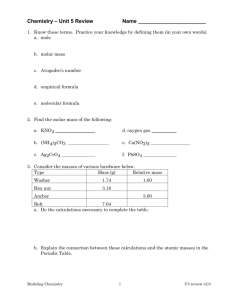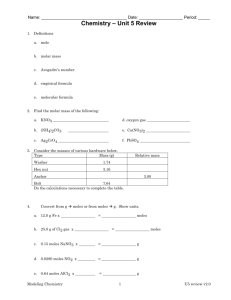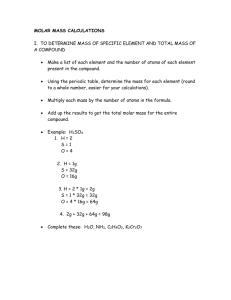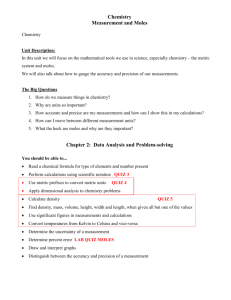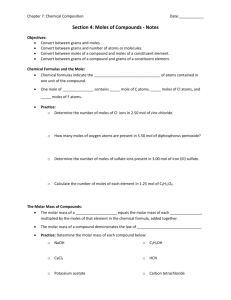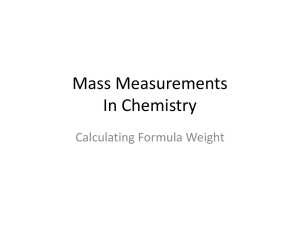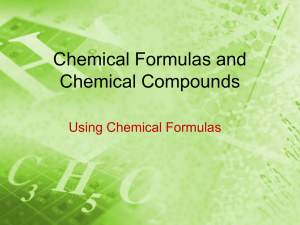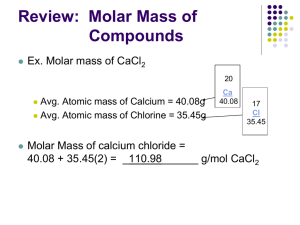The Molar Mass of Compounds
advertisement
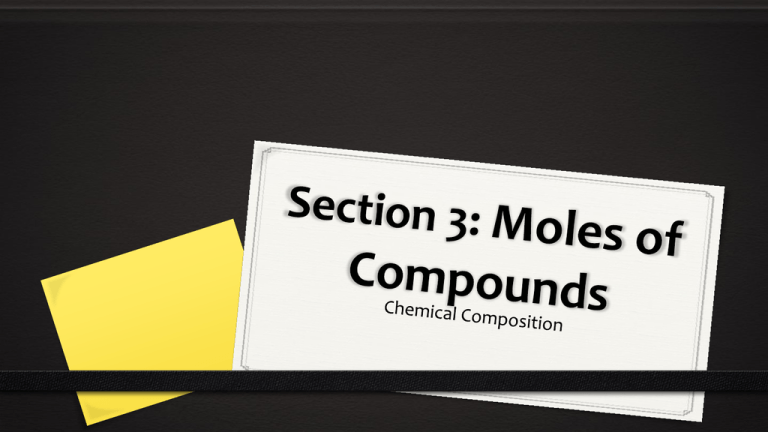
Learning Goals 0 Recognize the mole relationships shown by a chemical formula. 0 Calculate the molar mass of a compound. 0 Convert between the number of moles and mass of a compound. 0 Apply conversion factors to determine the number of atoms or ions in a known mass of a compound. Chemical Formulas and the Mole 0 Chemical formulas indicate the numbers and types of atoms contained in one unit of the compound. Chemical Formulas and the Mole 0 One mole of CCl2F2 contains one mole of C atoms, two moles of Cl atoms, and two moles of F atoms. Practice 0 Determine the number of moles of Cl- ions in 2.50 mol of zinc chloride. Practice 0 How many moles of oxygen atoms are present in 5.00 mol of diphosphorus pentoxide? The Molar Mass of Compounds 0 The molar mass of a compound equals the molar mass of each element, multiplied by the moles of that element in the chemical formula, added together. 0 The molar mass of a compound demonstrates the law of conservation of mass. Practice 0 Determine the molar mass of hydrogen cyanide. Practice 0 Determine the molar mass of calcium chloride. Converting Moles to Mass 0 For elements, the conversion factor is the molar mass of the compound. 0 The procedure is the same for compounds, except that you must first calculate the molar mass of the compound. Practice 0 What is the mass of 3.25 mol of sulfuric acid? Converting Mass to Moles 0 The conversion factor is the inverse of the molar mass of the compound. Practice 0 Determine the number of moles present in 35.0 g of hydrochloric acid. Converting Mass to Particles 0 Convert mass to moles of compound with the inverse of molar mass. 0 Convert moles to particles with Avogadro’s number. Practice 0 A sample of sodium sulfite has a mass of 2.25 g. 0 How many sodium ions are present? 0 How many sulfite ions are present? 0 What is the mass in grams of one formula unit of sodium sulfite?
